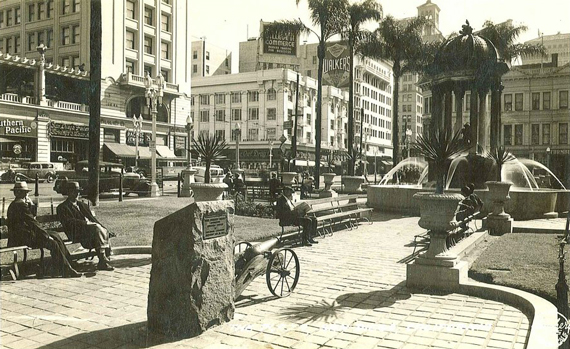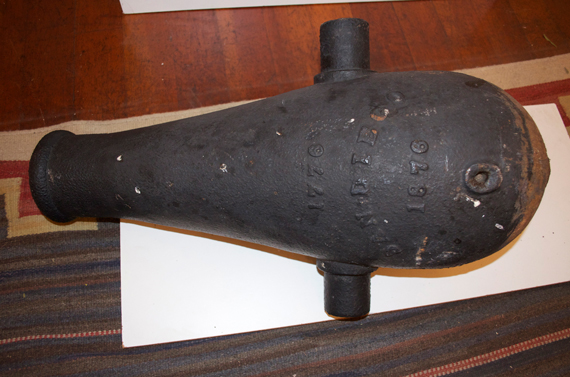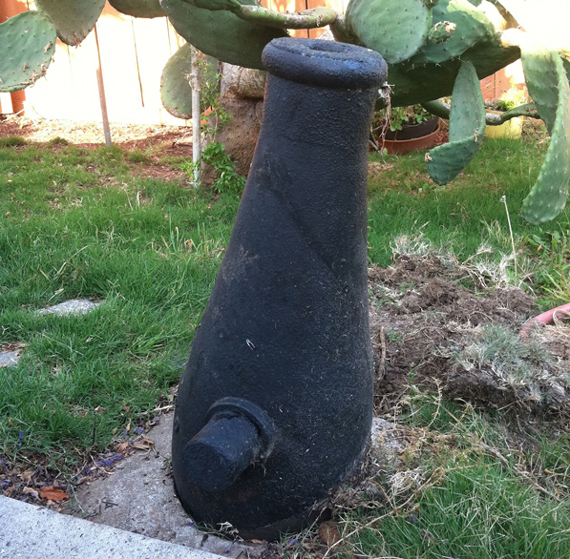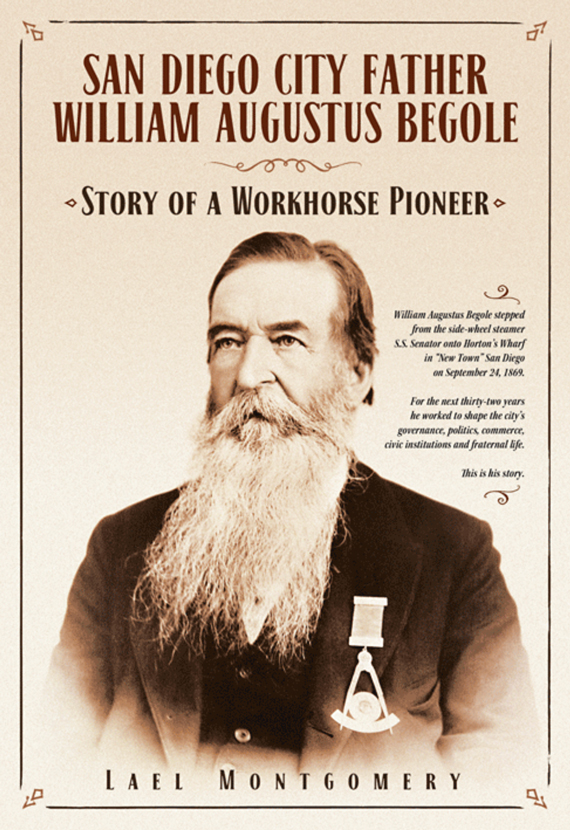|
The Marstons: A California Family - Part 9
Little Slogan
By Robin Lakin
November/December 2023
 The cannon on display in Horton Plaza, prior to WWII. Courtesy David Marshall |
 Close up view showing the Centennial cannon’s embossed slogan “1776 - San Diego - 1876.” Courtesy SOHO |
 Centennial gun as found in 2013. Courtesy David Lakin |
 Book cover for the William A. Begole biography by Lael Montgomery. Courtesy Amazon |
George W. Marston stood alongside his father-in-law, Lewis C. Gunn, in the small, wood-frame Presbyterian Church on Eighth Street in San Diego. They were there to witness the wedding ceremony of their good friend and associate, New York native Augustus W. Begole, and Mrs. Helen E. Hanford on April 24, 1881.
It was an unlikely pairing considering their advancing ages and to onlookers it appeared they had nothing in common. A grizzled forty-niner and long-time bachelor who spent 20 years in the California mining town of Red Dog, Begole was a regular at the Palace saloon and owned a tin and hardware shop at 529 Fifth Avenue (still extant). The bride, according to the sole census record available on her, was a Vermont native who was “keeping house” at San Pasqual with her son, George W. Butterfield, a young farmer.
The building on Fifth Avenue, designed by William Lacey as a commercial space and Begole’s residence, was described as a “handsome store with a fine iron front, large shop windows, and galvanized iron cornices.”
The married couple moved in, but, due to financial issues and Begole’s preference for the Palace over home life, Mrs. Begole soon filed for and received a divorce in 1882. That year, 28 divorces were granted in San Diego, the vast majority initiated by women.
Regardless of Begole’s saloon habits, he maintained a notable personal and civic association with the Marstons and the Gunns. A Masonic leader and member of the Republican party, Begole served on the board of trustees for the San Diego Reading Room, which Marston established; served as the Chamber of Commerce’s vice-president, with Marston as secretary; and was the founding director of the San Diego Fire Department, where Marston was a volunteer.
In keeping with his civic contributions, Begole ordered a short, snub nosed “noise-maker” cannon to be cast at the San Diego Foundry for 4th of July centennial festivities in 1876. Nicknamed “Little Slogan,” and embossed on the side with the phrase “1776 - San Diego - 1876,” the stubby cannon boomed a salute that set off two hours of revelry to ignite the highly anticipated centennial celebrations.
Used thereafter to announce important city events, and likely both the 1915 and 1935 expositions in Balboa Park, the cannon went missing prior to WWII. In 2013, it was discovered in freemason John Zink’s yard, after his death. His daughter, who handled his estate and sold the house, wanted it to go to a historic group. Having been turned away by every group she called until at the last minute, as the metal recyclers were coming the next day, she contacted SOHO.
SOHO quickly jumped into action to save the rare artifact and recovered the cannon that same year. Restored by Escondido’s Bandy Blacksmith Guild, it was fired for the first time in nearly a century at the historic Sikes Adobe in Escondido in 2017.
You can visit the cannon, on display at the Marston House Museum Shop, and learn more about Begole’s fascinating life in the book San Diego City Father - William Augustus Begole, Story of a Workhorse Pioneer by Lael Montgomery, on sale there.
Read more about this historic cannon’s find and save
Read the rest of the ongoing The Marstons: A California Story History Series.
|
2025
2024
2023
2022
2021
2020
2019
2018
2017
2016
2015
|







